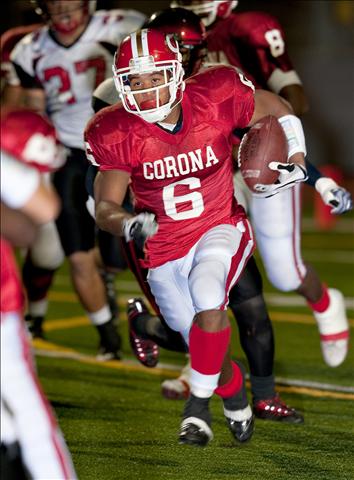Football, like every other sport, is a balance between skill and pure physical ability.
All sports fall somewhere on the spectrum ranging from unadulterated talent (think archery or billiards) to sheer athletic prowess (power lifting).
For as physical as it can be, football still requires an amazing amount of skill, skill that can often be masked in a combine setting.
On the pro circuit, it's pretty clear that college workout warriors don't always translate to NFL superstars. If that were the case, JaMarcus Russell would be in the Pro Bowl throwing deep outs to Troy Williamson.
But what about the jump from high school football to the college ranks? How do sensational combine performances correlate with development into a Division I player?
To answer this question, we looked at data from the National Underclassmen Combine, one of the largest combine circuits in the country. From February through July, the NUC makes dozens of stops around the country testing high school football players in events like the vertical jump, bench press and the 40-yard dash.
After testing concludes, players are broken down into teams for seven-on-seven competitions. At the end of each combine, awards for top performances are given out. Positional MVP awards are handed out, as well as an overall MVP. There's also a "combine king" award presented to one player in each grade to recognize superior testing in the events.

Former combine king Jordon James will suit up for UCLA
next year.
Photo by John Downey
During the summer of 2008, the NUC hosted 42 regional combines for freshmen and sophomores. That sophomore group, the class of 2010, represents current high school seniors, some of whom have already graduated early and enrolled in college.
Among 39 sophomores combine kings crowned (data for three combines was unavailable), there is great disparity with regard to how their high school careers transpired and how their prospects at playing college football have shaped up.
Seventeen former combine kings are set to play football at the next level, with all but three of those players heading to FCS schools.
Headlining the list are Old Mill (Millersville, Md.) running back/linebacker Josh Furman, who is on his way to Michigan. Furman was the sophomore combine king at NUC's Baltimore event.
Jordon James, a standout at Corona (Calif.) who rushed for over 1,000 yards as a senior, signed with UCLA on National Signing Day. James dominated NUC's visit to San Diego in 2008.
Other prominent recruits include Barry Bostic (Georgia Tech), Dakota Royer (Penn State), Jeremy Davis (Miami), and Sheldon McClain (Oklahoma).
However, statistically speaking, those players are the exception, not the rule, as 22 former combine kings will not be playing Division I college football. A number of factors at play likely contributes to this phenomenon.
First, it must be acknowledged that not all top players in a given area attend the NUC events.
There's certainly a line in the sand between high school players that are already being recruited and high school players that are trying to attract the attention of college coaches.
Combines favor the latter, because most players have the chance to raise their stock with an impressive performance. A player already receiving interest from colleges has alot more to lose with a sub-par performance or an off day.
Further, just as collegiate players with eye-popping physical gifts don't necessarily pan out as NFL players, high school players who excel at combine tests don't always make the grade as top college recruits.
There are many gigantic offensive linemen, dual-threat quarterbacks and linebackers that look like physical specimens but simply do not have the skillsets to pique the interest of college recruiters.
Likewise, at the NUC events, there are a number of impressive 40 times, vertical-jump heights and bench-press totals that, if not supported by talent and production on the football field, mean very little.
Ultimately it is the blend of on-the-field talents and brute physical gifts that seems to equal success from the high school ranks to the college realm.
With the NFL Draft roughly two months away, professional scouts will be seeking the exact same balance.
